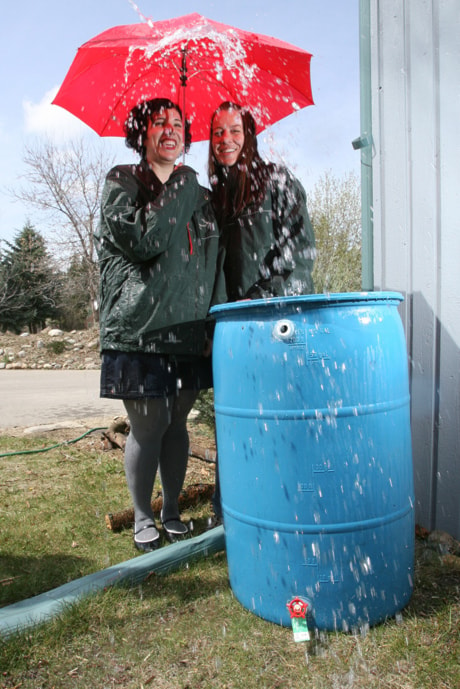The Advocate’s annual Report on Central Alberta is being distributed to readers early this week. The eight-section publication takes an in-depth look at the progress of our community. This story examines the city’s initiative to modernize its metering system.
The City of Red Deer isn’t wasting any time at finding ways to reduce water consumption.
In 2007, a Water Conservation Strategy was adopted with the aim of cutting per capita water use by 20 per cent from 2006 levels, within the next five years.
The strategy indicates there’s enough water to support 135,000 to 170,000 people at current water levels. About 90,000 residents live in Red Deer. It also suggests the city’s main water source, Red Deer River, may be increasingly threatened due to climate change and rising economic development.
Last year, the city began offering rain barrels at cost. People can buy them this year for $70 (including GST) through the Kerry Wood Nature Centre.
The toilet rebate program will be back, too. Residents can receive a $50 credit on their utility bill when they replaced an older high-flow toilet with a six-litre toilet or less. They are rebated $100 if they install a dual-flush toilet.
Pam Vust, environmental initiatives co-ordinator for the city, said this year’s public educational campaign will focus on outdoor water waste and healthy lawns.
“Outdoor water use can double the demands on our water treatment plant and it is the largest water waste,” Vust said. “We’re not telling people to stop watering but to water appropriately.”
People will also be learn more about the impacts of using lawn pesticides and fertilizers.
“It goes into the Red Deer River, which is our drinking water source,” Vust said. “We’re trying to protect our stormwater runoff . . . it’s all about using appropriate chemicals, organic preferably, and not overfertilizing or spraying.”
Conservation is also being applied to electrical consumption.
Starting in 2010, traditional meters will be replaced by automated ones that will show businesses and residents how much power they are using every 15 minutes. Once the new meters are installed, every customer will receive a “home area network” indoors. The display will show consumption levels every 15 minutes, versus the traditional meters that are read each month.
These new meters will be able to “talk” with a central collection system via a two-way communication network.
Ligong Gan, manager of city Electric, Light and Power Department, said staff will be able to read the meters any time of the day or night. It will give customers real-time information and better consumption information so they can make more informed decisions.
Information will also help retailers, who can then set up special rates for customers who may want to take advantage of peak and off-peak hour differences, Gan said.
Gan said the advanced metering infrastructure (AMI) will help the city better plan for each subdivision or business area based on what it’s seeing for consumption levels.
And the meters will immediately report when the power is out at a site.
Gan said the changeover to be implemented in 2012 is largely driven by changing provincial rules regarding electricity consumption.
“Right now, there are no requirements yet for water meters,” said Gan, whose department is working with several city departments on the initiative.
The 2009 budget included spending $681,000 for the software, communication system and equipment.
Plans are to install the communication system this year and install the meters and equipment in 2010.
The cost of the $24-million program will be spread out over four years and then recovered through customers over a longer period.
The program includes installing new water meters.
Ron Wardner, construction and maintenance superintendent for the city, said the existing ones have an outside remote that is connected to the meter by wire.
“They’re prone to failure,” Wardner said. “These new systems will help to alleviate all that.”
It’s uncertain if the water meters will have the same capabilities as the electrical ones since the actual system has yet to be chosen.
ltester@www.reddeeradvocate.com
